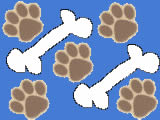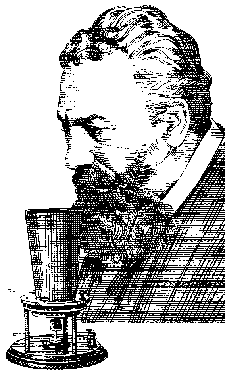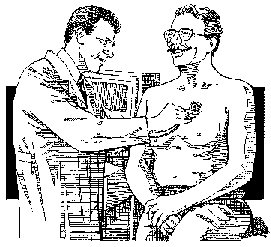Getting Started With the Basics
Review Pavlov's Law
|
Pavlov was a scientist in the 1800’s who discovered that behaviors could be triggered by signals. He attached test tubes on the dog’s mouth just below the salivary glands to measure the behavioral response. He used a bell as the signal. He would ring the bell, present a plate of food to a hungry dog, and the dog would salivate (in anticipation of the reinforcement). The response was measured in the test tubes. After a series of repetitions the response was paired with the signal. He would ring the bell (which was the signal) and the dog would salivate the same whether or not food was presented. It became an automatic response upon hearing the signal. It makes sense if I were to pair a dollar with a signal. Every time I see you doing what I like, I will tell you "good" and give you a dollar. After a few times you will come to expect the reward system and even figure out what I want from you. If you went home with 35 dollars in your pocket after our session, you would very quickly pair the two together and you might even go home and practice. The dog’s mood has a lot to do with it’s learning. This was part of Pavlov’s formula; present the food to the hungry dog. If I whereto tell you today is a bonus day and for every "good" you get $100, you would get very excited. Our dogs respond the same way. They might get attentive with dry kibbles, but they get really excited when it’s a piece of meat or cheese or whatever your dog really likes. So we pair the word or sound "good" with food. Like Pavlov, the reward and the signal get paired together. When the dog hear "good", the dog salivates just like Pavlov’s dogs. So this is the secret to our goal for off leash obedience without food. We pair our word "good" with food.So anytime you give treats to your dog, say "good", present the reinforcement and pet your dog because touch is also a signal . |
Have you ever been to a concert where the sounds were so loud that you couldn’t hear yourself think, let alone hear someone speak? Suppose you wanted to leave. Typically you would give someone a signal that you want their attention, maybe by giving them a tap on their shoulder. When they turn to you and make eye contact, youcould yell and gesture, "Let’s get out of here." Once eye contact is established, then a line of communication becomes open and it’smuch easier to communicate our needs.
Our dogs are in a similar situation. They have a concert going on in their head and we need a signal to cut through the noise. When your dog is at the end of the leash barking and pulling they have a lot of noise going on inside their head. Since our goal is off leash obedience, we needa signal to get the dogs attention. We pair the word "no" with a punishment reinforcement, a quick abrupt snap on the collar with the leash while you say "no" with each pop. In time, the two are paired together.
A scientist proved this with an experiment where they put volunteers in a chair with electrodes hooked up to them. They told them when they set off a red light signal and sound, they get a shock. When they set off the green light they would not get a shock, but it meant that the red light would follow. After a few repetitions of this exercise, the students came to expect and tense up for the shock. Even when the shock was not applied, they still tensed up for the shock - just like Pavlov’s dogs, the behavioral responses were programmed to do so. Corrections can also be triggered as well as positive responses like the anticipation of food. Now the question is how hard to deliver the correction. The dog tells you how hard to correct. Your dog’s response should be to look back at you to see what the heck just startled them. When they look back you need to be prepared to repeat the command and gesture to help the dog understand what you want.
|
|
The two most important tools of a dog trainer are the leash and collar. How you use these tools will also influence your dog’s attitude during and after training. Your dog must associate these tools with having fun and play.
How do we teach the dog to like wearing their collar? The best wayis to put the dog in a stay position and slip on the collar. Then release the dog with their favorite reward, chasing a tennis ball or playing a tug game. What is important is after the collar goes on, it’s play-time. Also wearing the collar and not receiving corrections right away helps with the proper association. The leash and collar should be signs of activity with your dog which should make them very happy. |
Would you like this lesson in a text format for your phone email?
freeclass0b@dogskool.org
Continue to Lesson 1








 .
.